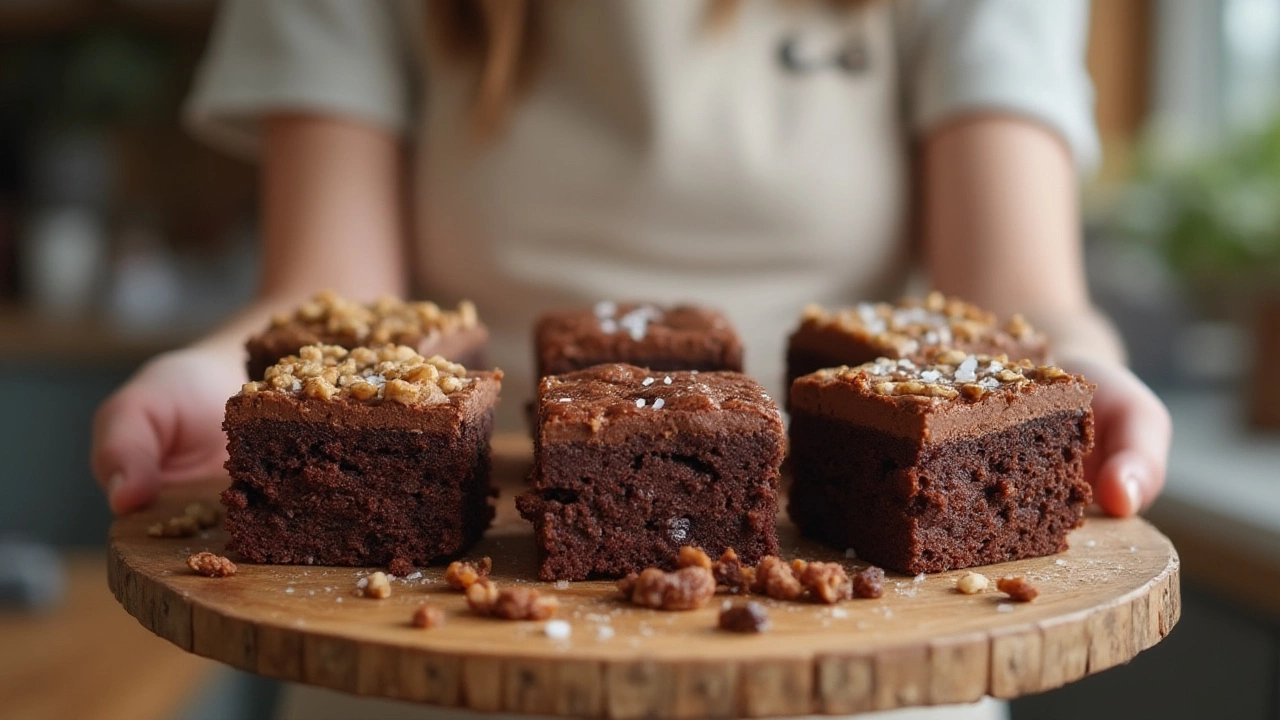
Different Types of Brownies: Classic, Fudgy, Vegan & More
Discover all the main types of brownies: classic, fudgy, vegan, gluten-free and more. Get baking tips, flavor ideas, and learn what makes each brownie style unique.
If you’ve ever wondered why one brownie feels like a dense chocolate mug and another is light enough to float, the answer is simple: they’re made differently. Below you’ll find the most common brownie styles, what makes each one unique, and quick tips to keep them fresh. Knowing the differences helps you pick the right recipe for any occasion—whether you’re feeding a crowd or just treating yourself.
Fudgy brownies are the go‑to for anyone who loves a gooey, melt‑in‑your‑mouth bite. They get their richness from a higher butter‑to‑flour ratio and less leavening. Use melted butter, a good amount of chocolate, and just enough flour to hold everything together. The result is a dense, almost cake‑free crumb that stays soft for days if you store it in an airtight container at room temperature.
Cakey brownies look like mini chocolate squares and have a lighter, more sponge‑like texture. The secret is extra flour, a pinch of baking powder, and often a bit more egg. This creates air pockets that lift the batter while it bakes. Cakey brownies are perfect for cutting clean squares and layering with frosting or icing.
Chewy brownies sit in the middle, offering a bit of bite without the heaviness of fudgy or the fluff of cakey. They typically use a mix of melted butter and oil, plus a higher sugar content. The sugar melts into the batter, forming tiny pockets that give that satisfying chew. Store them in a zip‑lock bag with a paper towel to absorb excess moisture.
Blond brownies, also called blondies, swap cocoa for brown sugar and vanilla. The result is a buttery, caramel‑like bar that’s great with nuts or chocolate chips. They follow the same basic ratios as fudgy brownies, just replace the chocolate with extra butter and sugar.
Vegan brownies replace dairy butter with plant‑based oils or coconut oil and use flax or chia “eggs” for binding. A good vegan recipe still keeps the chocolate intensity by using dark chocolate or cocoa powder. The texture can be fudgy or cakey depending on the flour and leavening you choose.
Gluten‑free brownies rely on almond flour, rice flour, or a ready‑made gluten‑free blend. Because gluten helps with structure, you may need a bit more binder—like an extra egg or a spoonful of xanthan gum—to avoid a crumbly result. The flavor stays chocolate‑rich, and the texture can be either fudgy or cakey based on the recipe.
When it comes to storage, the rule of thumb is simple: keep brownies in a cool, dry place and seal them tightly. If you bake a batch ahead of time, a single layer of parchment paper between the bars helps prevent sticking. For longer keeping, freeze brownies in a zip‑lock bag for up to three months; just thaw at room temperature before serving.
Now that you know the main types, you can experiment with mix‑and‑match ingredients. Try a fudgy base with a swirl of caramel for a gourmet touch, or add a handful of oats to a gluten‑free batter for extra chew. The possibilities are endless, and each variation brings its own flavor story.
Bottom line: the texture you’re after dictates the ratios of butter, flour, and leavening. Pick the style that fits your taste, follow the simple storage tips, and you’ll have perfect brownies every time.

Discover all the main types of brownies: classic, fudgy, vegan, gluten-free and more. Get baking tips, flavor ideas, and learn what makes each brownie style unique.